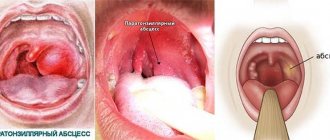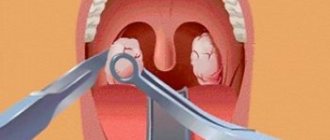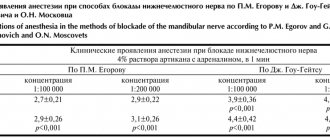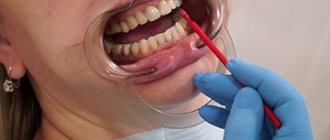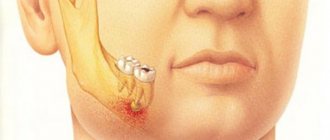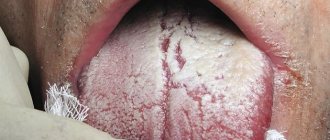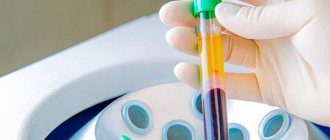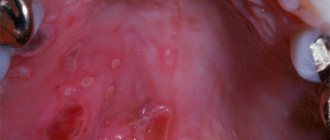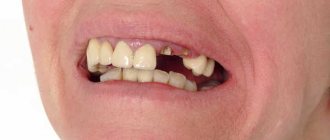Is it possible to cope with an abscess on your own?
In principle, if the abscess is less than 1 cm in diameter and does not cause much concern, you can try to deal with it yourself.
Warming compresses for 30 minutes 4 times a day help. Under no circumstances should you try to “squeeze out” an abscess. By pressing on the cavity with pus, you create increased tension in it, which contributes to the spread of infection. You cannot pierce an abscess with a needle. The sharp tip of the needle can damage healthy tissue or blood vessels underneath the pus. Malicious microbes will not fail to take advantage of this opportunity and rush to develop new “territories”.
If you have something resembling an abscess on your skin, it is better not to delay a visit to the surgeon. Especially if:
- the abscess is very large or there are several of them;
- you feel unwell, your body temperature has risen to 38°C or more;
- an ulcer appeared on the skin;
- a red line appears from the abscess on the skin - this indicates that the infection has spread to the lymphatic vessel and lymphangitis has developed.
Suppuration on the gums of a child
If the gums near a tooth fester in a child, you should urgently contact a pediatric dentist. Children's immunity is most often weak, so complications may appear even earlier than in adults.
In the presence of milk teeth, gum suppuration has a specific danger: if the pus spreads deep into the jaw, the rudiments of the molars may be destroyed, after which the full formation of the dentofacial apparatus becomes impossible.
You should not even try to remove pus from the gums yourself, since using antiseptic conditions at home this can threaten the baby’s life. Before visiting the dentist, it is only allowed to rinse the mouth with a soda-salt solution (1 teaspoon of each component in a glass of water at room temperature), but only if the child is already old enough and understands how to rinse the teeth and not swallow the liquid.
In what cases will a boil resolve without breaking through?
A furuncle is a disease characterized by inflammation of the hair follicle and the adjacent sebaceous gland, followed by purulent melting. It occurs as a result of the penetration of Staphylococcus aureus, sometimes other microorganisms, into the hair follicle. Cocci multiply and a purulent process develops.
The boil freezes at the stage of infiltration, when only swelling and hyperemia are noted, and pus has not yet accumulated or a slight accumulation of pus is formed. It doesn’t break through, it doesn’t grow further. The node is encapsulated and gradually passes. In its place, a bluish-tinged spot and the sensation of a nodule under the skin remain for a long time. Such development of a boil is considered benign.
If the boil does not go away, the stage of a purulent-necrotic core has begun, it may not break through. The course can be complicated and surgical autopsy is required.
After the purulent masses are released, the wound heals under a bandage for several weeks.
Only in the absence of suppuration of the follicular sac can the process go away on its own. Conditions must be met:
- treatment with antiseptic agents;
- maintaining personal hygiene;
- immune support for boils;
- the use of physiotherapy;
- specialized help from a doctor.
Treatment with antiseptic solutions involves the use of alcohol and an alcohol tincture of iodine, brilliant green or other dye. The pustule is cauterized with antiseptic dyes. Use alcohol or another antiseptic to treat the skin around and above the boil. In this case, the re-entry of pathogenic microorganisms into the lesion is prevented and a local effect on the inflamed follicle is ensured. The boil may go away within 1-2 weeks.
Immunity plays a key role. Its decrease leads to the appearance of multiple boils and the development of a chronic disease - furunculosis.
The skin performs a protective function. It contains intraepidermal macrophages, which are the first to respond to the penetration of pathogenic flora into the skin. They are the initial link in local defense and are involved in suppressing infection. Local factors explain the abortive course of the disease, when the boil can pass without breaking through. In case of frequent relapses, it is recommended to have a diagnosis done by an immunologist.
If you seek help from a doctor at an early stage, when there is no purulent content, the boil will go away on its own. To facilitate the process, physiotherapy methods are used at the onset of the disease. Physiotherapy procedures include UHF, laser therapy and dry heat. When the rod is formed, they are contraindicated. If used at the purulent-necrotic stage, the abscess will not go away. Inflammation and suppuration will intensify, and the abscess may become abscessed.
In cases of severe pain or inflammation, a treatment method with penicillin-novocaine blockades is used. A mixture of an antibiotic and a local anesthetic is injected around the inflammation and into its base. Pain is eliminated, microcirculation is restored, and the antibiotic acts on the lesion. The boil can resolve without opening.
Lack of personal hygiene is one of the predisposing factors for the growth of abscesses. Skin care should be performed daily, especially if your skin is oily.
Furunculosis is the occurrence of several purulent-necrotic foci at once. The pathological condition quickly becomes chronic.
Chiryak can jump up on the back of the head, shoulder, forearm, nose, ears, lower back, legs, hips, and stomach. Inflammation never appears on the palms and soles. The disease affects men in most cases. Children very rarely get sick.
In the first days, patients complain of itching, pain, and redness. 4-5 days pass, a core with pus appears. There are also complaints of high body temperature, headache, severe weakness, lethargy, and decreased performance. After 7 days, the contents break out. The pain subsides, the numbers on the thermometer return to normal. Next, the wound heals and a scar forms. Even without treatment, a boil may go away on its own in a couple of weeks.
There are times when a boil does not go away on its own. If after 1-2 weeks the patient’s health does not improve and the disease continues to progress, seek medical help immediately.
Experts recommend not to wait until the chiryak spontaneously opens. Do not start the inflammatory process, try to act on the pathological focus with local drugs. Cheap heparin or ichthyol ointments have an effective anti-inflammatory and disinfecting effect. Apply one of the drugs to the pathological area several times a day so that the inflammation disappears in a short period of time.
We invite you to familiarize yourself with felon: treatment of various types of diseases, antibiotics and ointment for felon
The entry of bacterial flora into the sebaceous gland occurs against the background of reduced immunity. A weakened body cannot fully provide protection against foreign agents. With the first manifestations of the inflammatory focus, the patient begins to feel pain and unmotivated weakness. Every patient wants to get rid of unpleasant symptoms and begins treatment. There are few situations when chiryak treatment is not required. These include:
- The inflammatory focus is small. It does not spread to nearby skin areas.
- Symptoms of the disease are not expressed (no fever, lethargy, weakness, pain in the area of pathology).
- Several days pass after the onset of the disease and the boil spontaneously opens, leaving a small reminder of it in the form of a shallow wound.
- Symptoms quickly regress.
- A boil can be confused with acne, which often occurs in adolescence and occurs against the background of hormonal changes in the body and does not require treatment. Correct diagnosis of the disease helps to establish a final diagnosis.
A boil can resolve without medical help only in people with strong immunity. The immune system quickly suppresses the growth and reproduction of pathogenic bacteria inside the sebaceous gland. The boil can go away on its own without medical intervention. Such cases are rare. It is better not to wait for a miracle, but to begin active anti-inflammatory and antiseptic therapy from the first days of illness.
Prevention of ulcer formation
To prevent pustules in infants and older children, preventive measures should be followed.
- Carry out daily oral care; in very young children it is not necessary to use toothpaste. The main thing is to remove food debris and prevent the appearance of pathogenic bacteria and their active activity. It is important to teach your child hygiene from an early age.
- Timely treatment of chronic diseases of the whole body, inflammatory processes in the oral cavity.
- Strengthen the immune system, since a weak immune system is a high risk of the appearance of pathogenic microorganisms and suppuration.
- If dental problems or diseases appear, you cannot stop caring for your oral cavity.
- Excessive consumption of sweets and starchy foods contributes to the spread of pathogens and their active functioning. After moderate consumption of these products, it is important to rinse your mouth.
Treatment of an abscess on a child’s gum must be qualified and timely. This will reduce the risk of complications and pathological conditions. It is important to follow preventive measures to prevent recurrence of a purulent abscess.
Is it possible to cure an abscess without opening it?
Even the ancient Greek doctor Hippocrates liked to say: “where there is an abscess, there is an incision.” Since then, little has changed in the principles of abscess treatment.
Why does the abscess need to be opened? The human body is designed very wisely; it usually gets rid of everything unnecessary. If pus has accumulated somewhere, this indicates that natural mechanisms were ineffective. The body does not know how to remove it. In this case, the cavity with pus becomes like a time bomb. Pathogenic microbes can spread beyond the abscess, sometimes leading to severe complications, including sepsis.
The best solution in this situation is to release the pus through the incision. As a rule, after this, improvement occurs quickly and the healing process begins.
After opening the abscess, the surgeon may prescribe antibiotics, but not all patients need them.
The use of antibiotics for purulent wounds
Damage to the skin of various origins can begin to tear, become inflamed and fester. In such cases, broad-spectrum antibiotics are prescribed for wounds.
As a rule, wounds treated in a timely manner heal safely without leaving any consequences. But sometimes the healing process does not go as smoothly as desired.
Antibiotic medications will prevent negative consequences and help the wound heal quickly.
How to tell if a boil is going away
Can it resolve on its own? A boil can actually pass on its own without breaking through, and most often this is exactly what happens. In the first two days - during the formation of a boil - itching will be felt and redness will appear. After four days, a rod forms and pus forms. During this period, the pain sharply intensifies; an increase in body temperature, headache and general weakness of the body may also be observed.
When a week has passed since its formation, it has reached its maximum size, the pain is no longer felt so much, during this period the contents of the boil spill out and the healing process begins. The swelling and redness subside and a scar forms.
How many days does it take for a boil to go away? The entire process may take one to two weeks. If the boil persists for more than two weeks and no improvement is observed, you should immediately consult a specialist.
You can understand that the boil has begun to go away on its own by the following signs:
- if the core of the boil is formed, it opens 8-10 days after the onset of inflammation. White-green masses began to come out of it along with liquid pus;
- after cleansing the wound, the patient's condition improved;
- pain, swelling, a halo of hyperemia around the node began to decrease;
- the affected part of the body has restored its function;
- symptoms of general intoxication disappeared.
The boil does not go away as long as there is a source of infection - a suppurating hair follicle and surrounding tissues. Rejection of the rod can occur on its own or will have to be opened by a doctor.
Need advice from an experienced doctor?
Get a doctor's consultation online. Ask your question right now.
Ask a free question
The core of the boil contains tissue decay products, toxic substances released by microorganisms that are absorbed into the general bloodstream. They cause symptoms of intoxication: headache, lack of appetite, weakness, drowsiness, joint pain, increased body temperature, initially to low-grade levels, then higher. After the rod is removed, the pain and inflammation will go away. The wound self-cleanses, crusts over and scars.
A scar may remain; you need to fight inflammation at the initial stage.
If the boil passes through the infiltration stage, this is indicated by the following symptoms:
- After 3-4 days, the abscess did not appear in the center, and the volume of the formation did not increase.
- Reducing pain, swelling of the boil.
- The color of the boil has acquired a stagnant color - bluish, which indicates that the inflammation has stopped;
- There may be tenderness on palpation, but there is no constant pain.
Reason: went deep under the skin
With the correct development of the inflammatory-purulent process, a boil core forms a few days after the appearance of the red nodule. It is then that significant pain manifests itself, because the process affects the deep layer of soft tissue.
In this case, the head of the boil begins to gradually come out, becomes large, and has a yellowish color. If this does not happen for a very long time, a person has the opportunity to observe an exceptionally large, red lump, feels pain and faces a significant increase in body temperature, which means that the following is happening in the body:
- The shaft of the boil began to develop in the wrong direction.
- The pus, instead of breaking through closer to the upper layers of the skin, went deeper.
- The contents of the boil mature in the deep layers of soft tissue and have the ability to rupture at any moment, infecting the entire body.
This structure and location of the boil is catastrophic for humans. In the normal course of the disease, the boil begins to form a purulent center 3-4 days after the appearance of the red lump, and breaks through about a week later. If a person does not observe noticeable changes within the specified time frame, he should immediately consult a doctor.
How is an abscess opened?
The operation is usually performed under local anesthesia. You will feel virtually no pain. The doctor will make an incision and clean the wound from pus - using a special suction, or manually, armed with a gauze pad.
Once the wound is clean, the surgeon will insert a finger or surgical forceps into the wound to check if there are still pockets filled with pus. Sometimes there are partitions inside the abscess that divide it into two, three, or more “rooms.” All partitions need to be destroyed and all the pus released.
We invite you to familiarize yourself with Zinerit for acne on the face, instructions, reviews, my experience
The wound is washed with an antiseptic solution. But they are in no hurry to sew it up. Pus may again accumulate under the stitches. The cavity should be left open so that it is better cleaned and heals faster. To drain excess fluid, drainage is left in it - a strip of latex, one end of which is released outside. Subsequently, dressings are carried out with antiseptic solutions, healing and antibacterial ointments.
A furuncle is an inflammation of the hair follicle, sebaceous gland, and adjacent connective tissue. If treatment is started in a timely manner, the boil can resolve without opening.
Why is it important to treat boils?
The sooner the boil goes away, the better. When it matures, pus forms, which must break through on its own. This may not happen; the abscess will turn into an abscess. Pus accumulates in the tissues and the boil cannot go away on its own. The formation of an abscess is accompanied by severe intoxication syndrome and high fever. The course of the boil can come with complications:
- spread of infection throughout the body by hematogenous route;
- independent squeezing of a boil can provoke thrombosis of the venous vessels of the head with the development of thrombophlebitis of the cavernous sinus, meningitis or encephalitis;
- sepsis – blood poisoning;
- lymphadenitis and lymphangitis - inflammation of the nodes and vessels of the lymphatic system.
In order for the boil to go away quickly and complications not to develop, adequate and timely therapy must be carried out.
What symptoms should you pay attention to and consult a doctor?
You can understand that a boil can go away on its own by the symptoms:
- soreness, swelling and redness increase every day;
- if 5-6 days have passed, but the core of the boil has not formed or has not ruptured on its own;
- a strong crust has formed on top, but pain, temperature and swelling continue to increase;
- enlarged lymph nodes appeared;
- severe intoxication;
- the pus has gone deep into the tissue; upon palpation, the symptom of fluctuation is positive - a feeling of fluid vibrations.
With the symptoms described above, you should not hope that the boil will go away on its own. It is necessary to seek surgical help from a doctor. The specialist will conduct a detailed examination and prescribe appropriate treatment and tests.
Boils are dangerous during pregnancy. There is no need to delay visiting the surgeon.
Abscesses on the face pose a danger. When the boil is located on the face and cannot go away on its own, you need to consult a doctor as soon as possible. Such localization is fraught with a number of consequences from the central nervous system. Such patients are subject to inpatient treatment with complex antibacterial and detoxification therapy.
The boil itself is not able to go away if self-treatment is carried out using traditional methods at home. A common mistake is to use warm, wet compresses and various ointments. The abscess will not resolve. The skin loosens from moist heat and becomes less protected from pathogenic flora.
The article has been reviewed
by the site editors
Mandatory medical consultation is required:
- If the boil does not resolve itself, pus continues to flow or ichor is released from the inflammatory site.
- Additional purulent foci appear in other parts of the body. Furunculosis develops.
- The inflammatory focus is localized on the face (nose, cheek, chin, ear). This location of the boil can only be treated in a hospital setting. Otherwise, the infection will spread through the veins of the face to the brain. The patient may remain disabled.
- The disease lasts more than two weeks.
- There is no positive dynamics from treatment (the boil begins to hurt intensely, the temperature rises to 40 °C, and is poorly controlled by antipyretic drugs).
- Septic shock develops.
- The formation increases in size and does not resolve on its own. Such a case requires surgical intervention; the infection can spread to underlying structures.
- The boil is at the stage of purulent melting, which requires surgical intervention.
- Purulent inflammation of hair follicles against the background of chronic endocrine diseases (diabetes mellitus).
- Red streaks spread from the formation (indicating the occurrence of lymphangitis).
A furuncle is a purulent-necrotic lesion of the sebaceous gland, hair follicle, and surrounding tissue. The inflammatory focus is characterized by severe redness, itching, and pain. It can resolve on its own only with strong immunity and timely conservative treatment.
A furuncle (popularly called a boil) is a purulent inflammation of the hair follicle caused by Staphylococcus aureus.
This disease is very unpleasant and causes a lot of trouble, but it can go away on its own.
If you follow all the necessary recommendations and carry them out systematically for the period specified by your attending physician, this process can be accelerated.
What will be the complications if the boil is not treated?
A single boil seems like a harmless disease, but it often leads to a large-scale disaster for the body. The boil can resolve spontaneously, but in most cases the inflammation spreads to neighboring tissues. Complications appear if:
- The abscess is localized in the area of the vestibule of the nose or nasolabial area.
- The patient started taking antibiotics late.
- There is no local treatment of the inflammatory area.
- The patient touched the inflammatory rod with dirty hands and caused a secondary infection. Bacteria will enter the pathological focus if the boil bursts and the person does not treat the wound with antiseptics.
- The patient has a weak immune system and is unable to cope with the disease on his own.
- If you open an abscess with non-sterile instruments (needle, scalpel).
- Additional injury to the lesion occurs (during shaving).
We suggest you read How to find out what your child is allergic to?
Complications of a boil are divided into local, distant, systemic. Local ones include:
- An abscess is an inflammatory change in the skin with the formation of a limited purulent cavity. Occurs as a result of the release of pus under the skin. The tissues become inflamed and a purulent cavity forms.
- A carbuncle is a formation similar to a boil, only the inflammation covers several hair follicles at once, and several purulent holes are formed. They break out to form a wound. The disease goes away within a few weeks.
- Phlegmon is a purulent melting of tissues that is not limited to the cavity, but spreads to surrounding tissues. It does not resolve on its own and requires surgical intervention.
Among the long-term consequences of a boil are:
- lymphangitis - inflammatory changes in the lymphatic vessels;
- lymphadenitis - inflammation of the lymph nodes;
- Phlebitis - inflammatory changes in the venous wall.
Systemic complications of the pathological process include: septic shock, encephalitis, furunculosis, spread of inflammation to internal organs. Long-term and local complications disappear after the main source of infection resolves. Systemic ones need to be treated in the intensive care unit.
Features of pulling pus from open and closed wounds
The formation of purulent masses is a kind of protective reaction to the contact of infectious agents with damaged skin.
The proliferation of microorganisms occurs under the dermis and on its surface. The immune system signals blood cells about pathological processes. Leukocytes are sent to the site of inflammation. The reaction of bacteria binding to red particles ends in suppuration of the skin area. In medicine, closed and open wounds are distinguished. The former have no communication with the external environment. The second ones are in contact with her.
Both pathological processes on the skin are treated according to a specific algorithm. The choice of drug that draws out the contents will depend on the type of wound.
The general rules for the treatment of open and closed wounds on the skin with pus are the principles:
- The application of the drug with pulling properties occurs under sterile conditions. The doctor must treat the working surface of the skin and hands. If the patient is treated for pus on his own, similar principles should be followed.
- If an allergic reaction to the drug occurs, stop its use. The drug is replaced with another medication with stretching properties.
- Closed wounds at the stage of abscess formation cannot be treated with Vishnevsky ointment. Liniment can cause increased discharge of pus. The pathological contents spread into the deep structures of the skin and into neighboring tissues.
You can effectively remove pus from a pimple at home if you follow the rules.
Treatments
Often, to speed up the treatment of a boil, it is necessary to use auxiliary means, especially in the case of furunculosis, when there is a lot of inflammation and they appear frequently.
In most cases, surgical intervention is not required and the boil can be cured on its own, however, with a subcutaneous abscess, when pus spreads into the subcutaneous tissue, opening the boil is necessary.
Ointments for the treatment of boils are mainly of two types, their choice depends on the stage of development of the boil.
In the first stages of development, it is recommended to use pulling ointments; they promote the formation of the head of the boil - pustule. After the head has formed, the abscess bursts and the contents come out painlessly. Also, ointments of this type are antiseptic, protecting inflammation from infections. Among these ointments the following are distinguished:
- Ichthyol ointment. They are most often used in the first stages of boil development, but they also work well in treating it in subsequent stages. The ointment is used with compresses; each compress must be kept for 2-3 hours.
- Oflocaine. This drug suppresses pain well and also has a disinfecting effect.
- Heparin ointment. When applied to an inflamed area, the ointment dilates the blood vessels, which promotes better absorption. The drug has anti-inflammatory and analgesic effects.
The following type of ointments is recommended for use in the last stages of boil development, especially after spontaneous opening. Antibiotic ointments are used when the integrity of the skin is damaged.
The most effective ointments with antibiotics:
- Levomekol. It has an antibacterial effect and also promotes accelerated regeneration of damaged skin. Soak a sterile gauze pad with the ointment and apply it to the wound.
- Tetracycline ointment. Is the most accessible. Used after rejection of purulent masses. Works well against many types of bacteria. You can simply apply it to the location of boils or make bandages.
- Gentamicin. A broad-spectrum antibiotic with antibacterial and regenerative effects. Apply to dry skin.
Pills
To treat a boil, you should choose drugs from the group of antibiotics, there are quite a lot of them, here are the most affordable and effective:
- Ampicillin. It belongs to the group of penicillins and has proven itself well.
- Lincomycin. The drug has good penetration into the skin.
- Rovamycin. It is aimed at combating staphylococcus and has almost no side effects.
The doctor will help you choose the most effective and appropriate drug.
It is worth noting that antibiotic tablets can often cause diarrhea.
Traditional methods
People have long learned to treat boils on their own, many effective folk methods have appeared, but when using them, be extremely careful: the abscess must not be damaged or pierced, and during any interactions with the site of the boil, maintain hygiene.
- Laundry soap. The soap needs to be grated. Mix one part soap with two parts water. You need to cook until a creamy consistency is formed. When it cools down, apply the resulting mass to the inflammation for several hours every day until the boil disappears.
- Sulfur. Special sulfur is sold in any pharmacy in powder form; you need to take it orally, diluting a quarter of a teaspoon in water.
- Potato. A potato slice about 2-3 millimeters thick should be applied to the inflammation under a bandage and changed 3-4 times a day.
- Aloe. A small part of the aloe needs to be washed and cut to release the juice, then applied to the inflammation under a bandage, change the bandage every 4 hours.
When treating boils, it is important to understand that their appearance for each person can be caused by different factors and for successful treatment they must be correctly identified. Most often, the boil goes away on its own and without any complications, and using the recommendations from this article, you can get rid of the problem much faster.
Ointments for drawing out pus
Subcutaneous purulent wounds appear on any part of the human body. The abscess can be on the face, leg, or even on a finger. If antiseptics are not enough to clean the wound, it has become infected, then ointments are used to draw out pus from the closed wound. Regardless of the reason for the suppuration, during the treatment it is necessary to remove it, carry out disinfection, use antibiotics and wound-healing drugs. And if the latter is prescribed by a doctor, then you can independently extract pus from the wound using one of the following ointments:
- Levomekol. This ointment has a combined effect, contains an antibiotic, and also accelerates skin regeneration, removes the inflammatory process and draws out purulent accumulations. Before applying the ointment to the damaged area, the skin around it should be treated with peroxide.
- Streptocide. An ointment containing this element has an antimicrobial effect and is suitable for treating minor injuries (abrasions, scratches) in which pus has formed. However, it should not be used during pregnancy, and people with kidney problems should use this drug very carefully.
- Ichthyol ointment. It has a bactericidal, analgesic, disinfecting and pus-pulling effect. In order to get a good result, the ointment for purulent wounds should be squeezed onto a cotton pad, applied to the injury, covered with parchment and secured with a band-aid. This bandage should be changed four times a day.
- Sintomycin in the ointment has an antibacterial effect. This ointment is suitable for application to wounds that do not heal well; it protects against the appearance of a purulent process. However, this drug has one significant drawback - it is addictive. For this reason, it can only be used when absolutely necessary and for a short period.
- Vishnevsky ointment has gained wide popularity in the treatment of purulent wounds. After all, before removing the pus, it is necessary for the abscess to mature as much as possible. With the help of this drug, blood circulation in the damaged area is stimulated. When used on already open wounds, Vishnevsky not only removes pus, but also heals the skin. It is used both for compresses and lotions.
It is impossible to say for sure which ointment is better at drawing out pus from a wound, because each organism is individual and the healing of damage depends on many factors.
